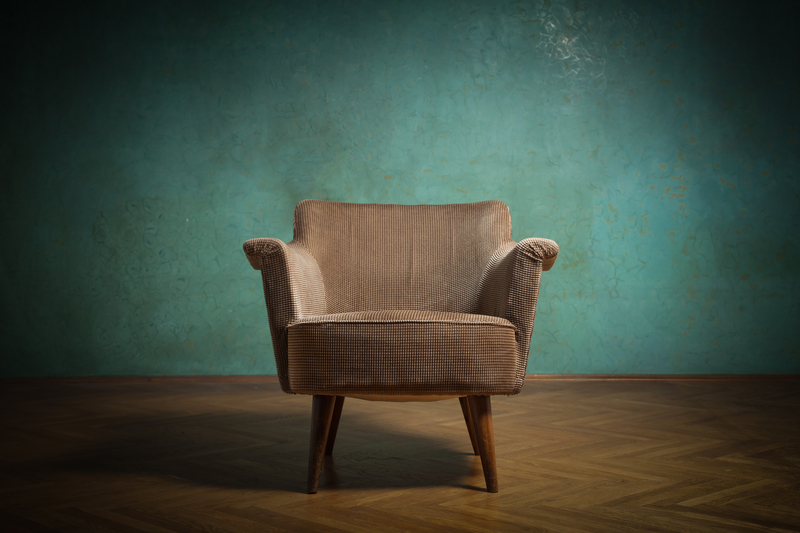
We all love the satisfaction of scoring a wallet-friendly decor find off the beaten, mass-produced path.
Whether you just nabbed a designer chair off Facebook Marketplace, a set of crystal glasses from Goodwill, or a fantastic antique from your neighbor’s yard sale—that endorphin rush of getting an excellent deal is hard to beat.
But when it comes to thrifting, there are some things you shouldn’t bother buying, whether for health reasons (ahem, lead glassware) or value.
We spoke to the experts to find out what things are better left on the shelf, or someone’s lawn, so you could avoid the disappointment (and potential bedbug infestation). Here are seven things you should never buy used, no matter how cheap they are.
1. Upholstered furniture
There’s lots of ickiness that might be living in upholstered furniture, especially if it is used and hasn’t been adequately cleaned. While some consignment shops vet their inventory well, you never really know.
And so upholstered anything makes it to the top of the experts’ list of things you should never buy used.
“The fabrics and stuffing hide things like bedbugs and allergens,” says real estate broker and house flipper Adrian Pedraza, of The California Homebuyer. “It’s hard to fully clean them since they have many pieces.
Bottom line: “While cheap is nice, potential health issues are usually not worth the savings,” adds Pedraza
2. Linens
Vintage sheets and towels certainly can be adorable. But when it comes to using these items, it’s risky, especially if you or someone in your brood has dust or mold allergies.
“Used linens, especially if not properly washed and maintained, may harbor bacteria, allergens, dust mites, and other particles that can trigger allergies,” says environmental engineer Cristina Solis, of Green Hive.
Bottom line: Luckily, you can find great towel sets at low prices that will make you feel like you scored a deal.

3. Vintage kids’ stuff
The adage “They don’t make ’em like they used to” is certainly true when it comes to many toys. In many ways, we should all be thankful for that!
Vintage kids’ toys (especially those for babies) might look adorable, but they can be made from hazardous materials at their worst. And at best, used toys will give a crowded day care a run for its money germwise.
Bottom line: “Old toys and kids’ furniture might contain bad chemicals from way back,” says Pedraza. “Paint could have lead in it. Outdated electronics carry fire risks and faulty wiring. They aren’t as efficient or safe as new models.”
4. Old electronics
Did someone say faulty wiring and fire hazards? Because that’s the biggest reason to avoid old-school electronics. There’s another, and possibly more obvious, reason to pass on these—even if nostalgia for days past has you reaching for that old VCR.
“The problem with used electronics is that you don’t know if they’ll work or even hold up, causing you to spend more in the long run to replace them,” says consumer savings expert Andrea Woroch.
Bottom line: Old wiring is not just a fire hazard, it can also harm your newer electronics.
“A faulty wire could lead to further damage, especially if you’re using something to connect to your TV or computer,” adds Woroch.
5. Mattresses
We get it, mattresses are pricey. But you simply shouldn’t bring home a used mattress of uncertain origins. Unless it was owned by someone you know and trust, a mattress is just one of those things better purchased new.
“Buying a used mattress is never a good idea,” says Woroch. “You have to worry about cleanliness and potential bedbugs.”
Bottom line: You might save money on a used mattress, but you’ll likely lose sleep.
“Used mattresses may have damaged coils that cause sagging, which will not provide the support needed for quality sleep,” says Woroch.
6. Cookware
Pass by anything that’s nonstick or otherwise porous or has potentially seen raw meat, such as cutting boards.
“Over time, cutting boards can develop deep grooves and scratches,” says Solis. “Those grooves—and porous cookware—can absorb bacteria from raw meat, poultry, or fish. This can lead to cross-contamination when preparing other foods.”
Bottom line: Think of these objects as the undergarments of the kitchen, and just like you wouldn’t pick up a pair of used underwear at a yard sale—these used kitchen items are best left in the trash as well.
 7. Appliances
7. Appliances
There’s no denying how cute vintage appliances can be.
But the good news is that plenty of companies are making new appliances with a retro style. So there’s really no reason to risk buying that old-school—and potentially hazardous—toaster on Craigslist.
“Older appliances might lack compliance with current safety standards, potentially leading to electrical hazards or malfunctions,” says Solis. “In terms of energy efficiency, vintage appliances tend to consume more energy than modern ones, resulting in higher utility costs.”
Bottom line: Older appliances might also use environmentally harmful refrigerants—which we’re pretty sure you don’t want anywhere near your breakfast.
Larissa Runkle, realtor.com

